
Window Treatment & Styles
How to Keep Wasps Away: 12 Best Tips!
Wasps can turn a peaceful garden, patio, or house into a source of stress, especially during warmer months. Maybe you're allergic to their stings or just being cautious about your kids and pets. Or perhaps you're simply afraid of these insects and don't want to deal with any wasp problems. After all, wasps are notorious for being quite aggressive, so it's understandable why you don't want them anywhere near your house.
In this guide, we'll walk you through everything you need to know about identifying various species and how to keep wasps away!
Key Takeaways
- Identify the wasp type. Yellowjackets, paper wasps, hornets, and mud-daubers have different behaviors. Knowing which type you're dealing with determines your approach.
- Remove attractants. Sweet drinks, meats, fallen fruit, and uncovered trash lure wasps. Clean food and seal garbage to make your space less appealing and prevent wasp infestation.
- Use natural repellents and traps. You can use a vinegar solution, citrus sprays, essential oils, and decoy nests.
- Prevent entry into your home. Sealing cracks, installing bug screens, and using wasp-repelling plants are great long-term solutions to keep wasps out.
What Are the Most Common Wasps?
Although infamously known as being highly aggressive, not all wasps are the same. There are a myriad of different species exhibiting different behavior. In the following sections, we'll provide more details about Canada's most common wasp species. This information can help you choose the best method to keep wasps away.
Yellowjackets
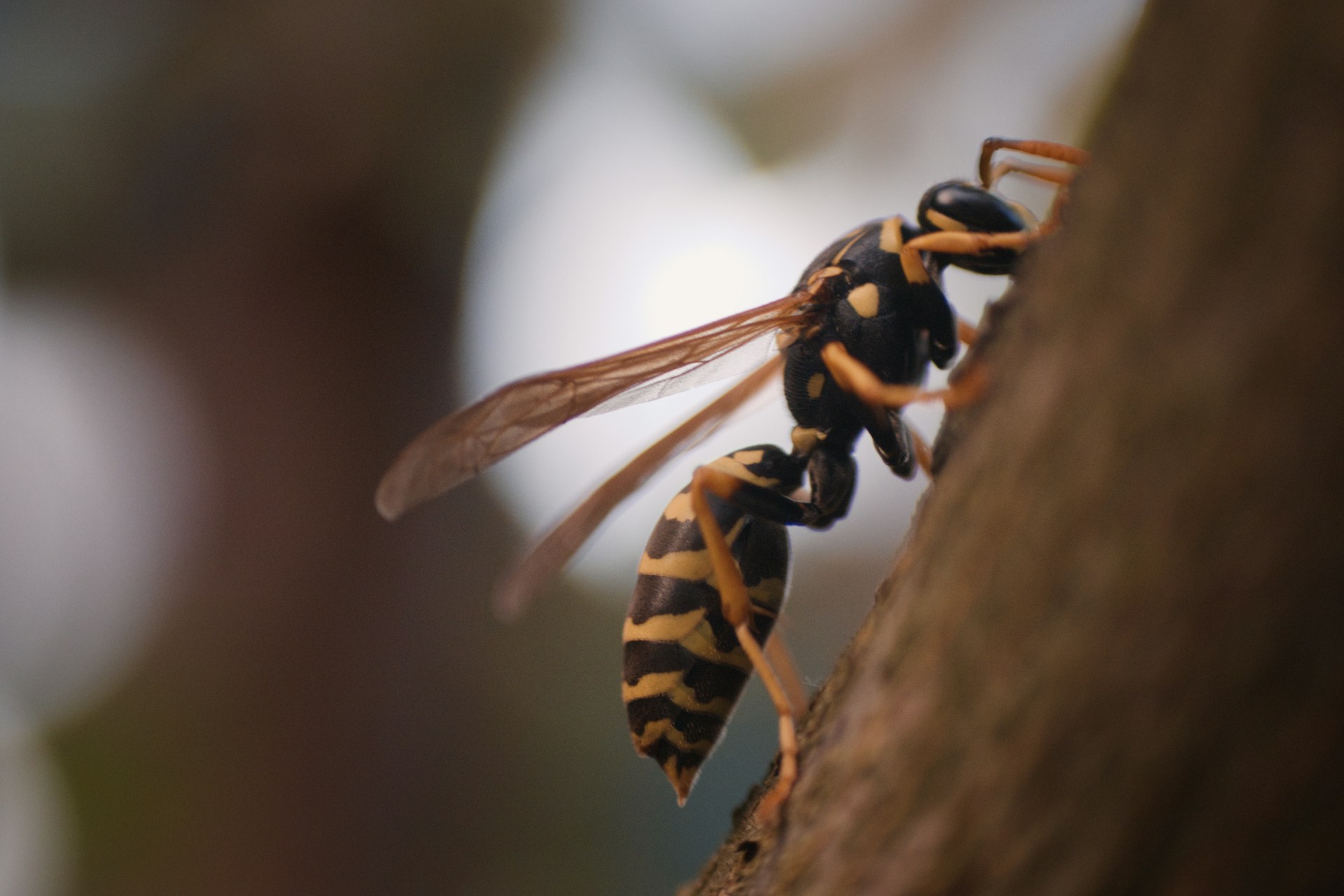
These are social wasps and among the most aggressive insects. They are commonly seen around human activity and can be identified by their rapid, side-to-side flight pattern before landing.
Yellowjackets often build nests in the ground, wall voids, or under porches and can become territorial when disturbed. Their compact nests can house thousands of workers.
And here's a fun fact: the bald-faced hornet is actually a yellowjacket, not a hornet!
Paper Wasps
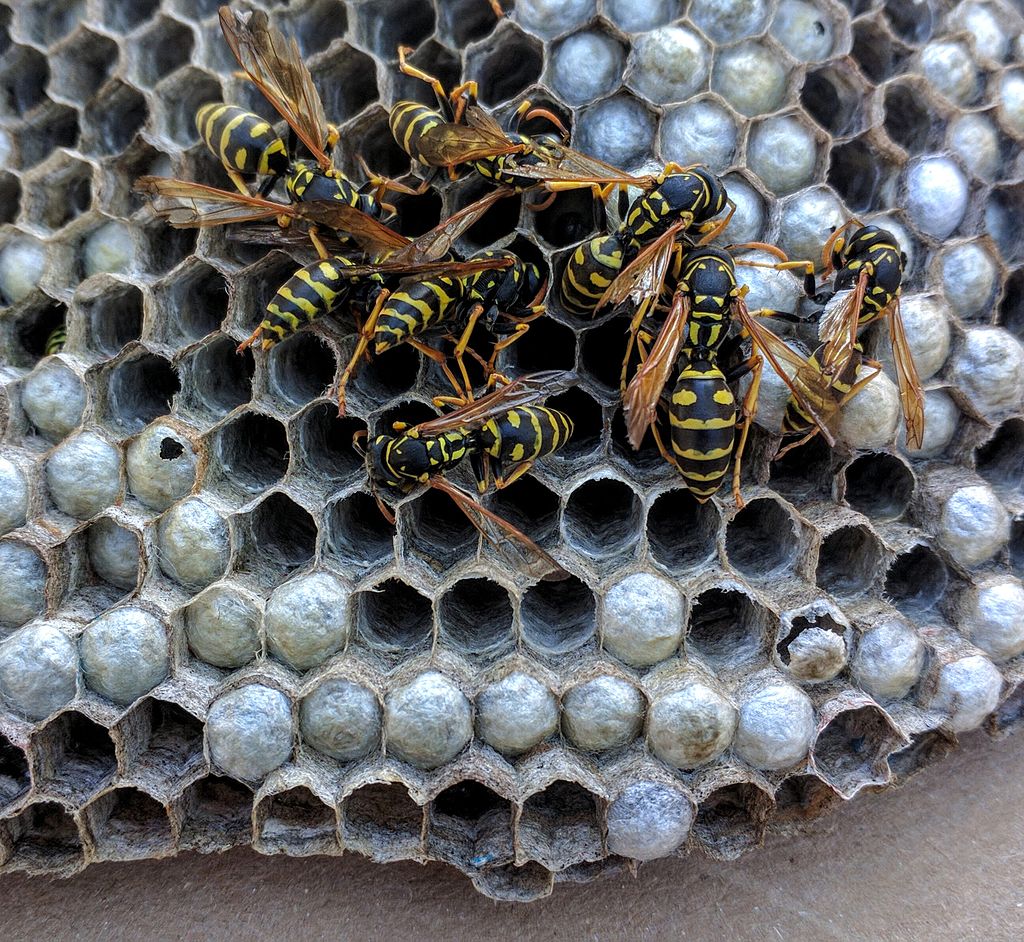
Paper wasps can be recognized by their long legs and umbrella-shaped open nests. These wasps usually nest in sheltered areas like eaves, sheds, and mailboxes.
While less aggressive than yellowjackets, paper wasps will defend their nests if they feel threatened.
Hornets
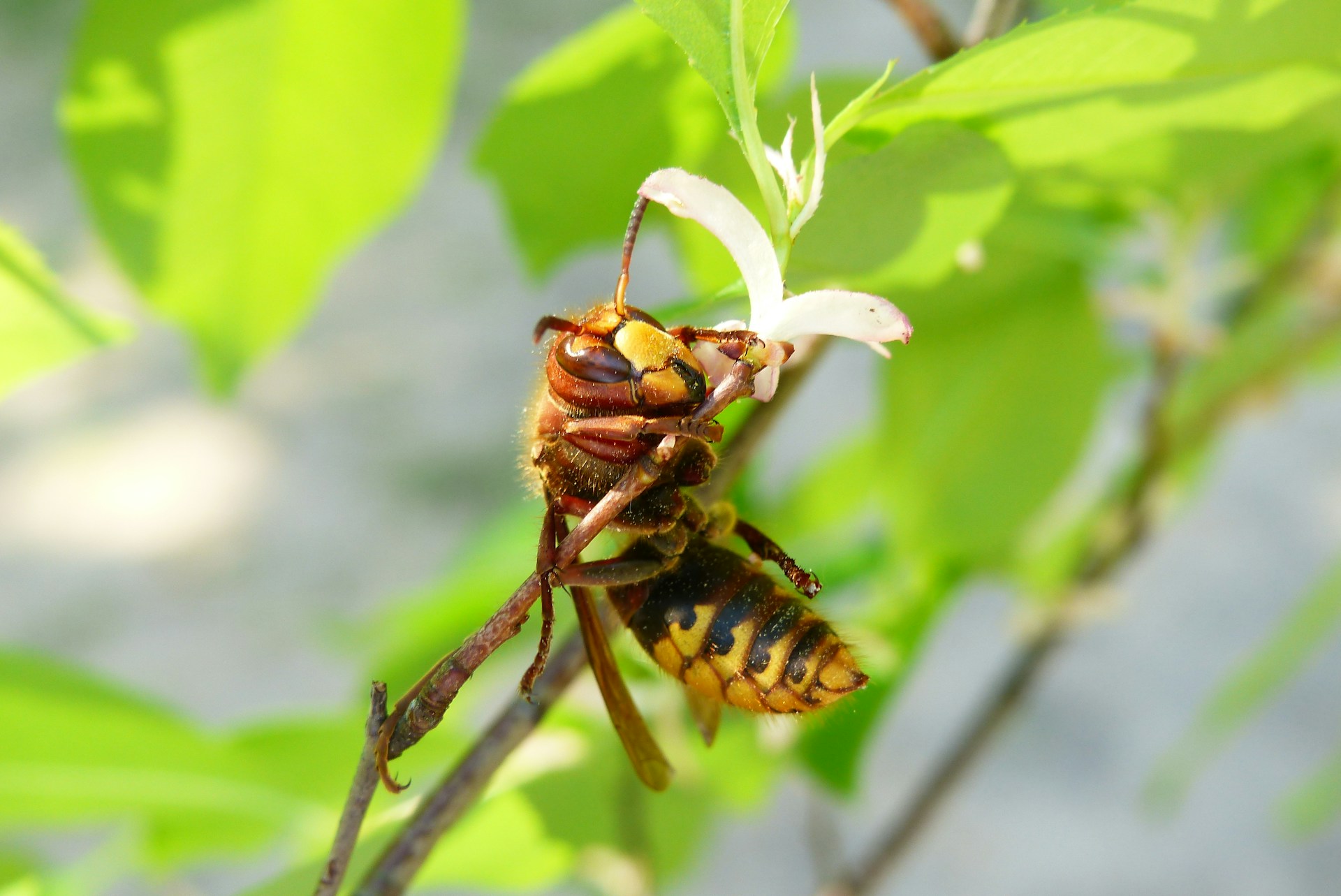
Hornets are large wasps (they can reach 5.5 cm or 2.2 in in length) with brown and yellow stripes. They form a genus called Vespa. In Canada, you may stumble upon the European hornet.
These hornets make intricate paper-like nests. They rarely sting and are known to avoid conflict but may become aggressive if grabbed or stepped on. They can also be aggressive around food sources.
Yellow-Legged Mud-Dauber Wasps
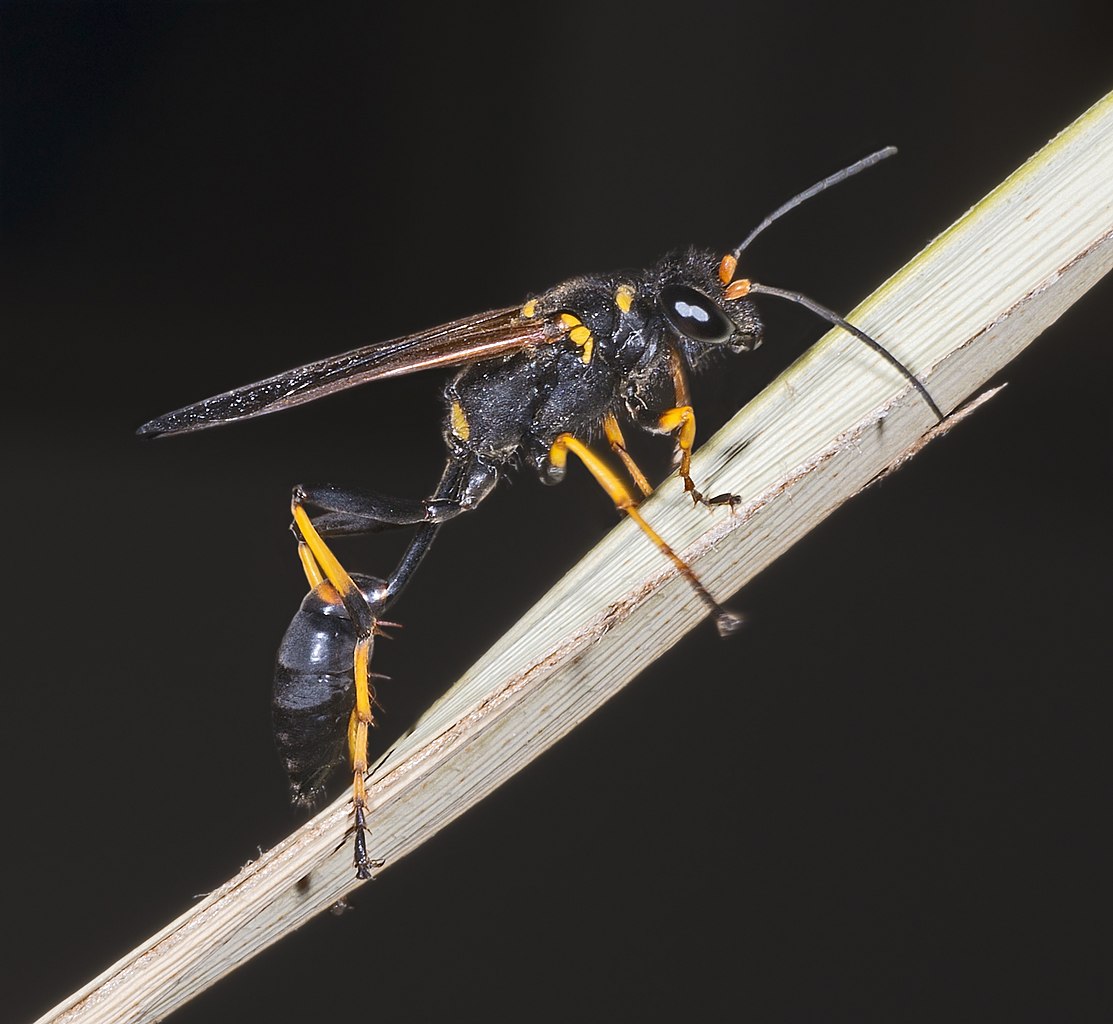
These are solitary wasps that build nests out of mud in sheltered areas. They do not live in colonies. Instead, given that they are parasitic wasps, they lay their eggs on spiders.
After laying all the eggs, the female leaves the nest. The larvae then feed on the paralyzed prey (the spiders) and develop inside mud cells until ready to emerge.
These wasps are generally not aggressive but can sting while defending their nests. They are considered beneficial insects as they help control other pest populations.
What Attracts Wasps to Your House?
Wasps are typically attracted to areas that provide food, water, and shelter. Common attractants include:
- Sweet food and drinks. Items like soda, fruit juice, and ripe fruit attract wasps looking for sugar.
- Protein-rich foods. Wasps are scavengers and will seek out meat, fish, and even pet food left outdoors.
- Flowering plants. Bright, fragrant flowers provide nectar, a key food source for adult wasps.
- Unsealed trash cans or compost piles. Rotting food and organic waste are strong attractants. Always use tightly sealed lids.
- Cracks and crevices. Small openings in siding, roof edges, or eaves offer ideal nesting spots. Wasps look for sheltered, undisturbed areas to build nests.
Are Wasps Dangerous?
Wasps are dangerous, especially to those who are allergic to their stings. Wasp stings can trigger severe allergic reactions, such as anaphylaxis, which may cause difficulty breathing, a drop in blood pressure, or even loss of consciousness—requiring immediate medical attention.
Even for those without allergies, wasp stings can be painful and lead to swelling, redness, and discomfort. Stings on sensitive areas like the face, neck, or hands tend to be more painful and inflamed. Wasps are also dangerous for pets and small children, who may unknowingly provoke them.
Therefore, take extra care when working outdoors, especially around overgrown vegetation, fallen fruit, or near potential nest sites. Wear shoes and avoid wearing strong perfumes or brightly colored clothing that might attract wasps.
How to Get Rid of Wasps and Keep Them Away: 12 Best Methods
If you've noticed signs of wasp activity around your house, or maybe even inside the house, it's best to take some measures to get rid of them before their presence becomes too big of a problem.
As such, here are some methods that can help you get rid of wasps, as well as some preventative measures you can take during wasp season to keep them away from your garden and house!
1. Install Wasp Traps
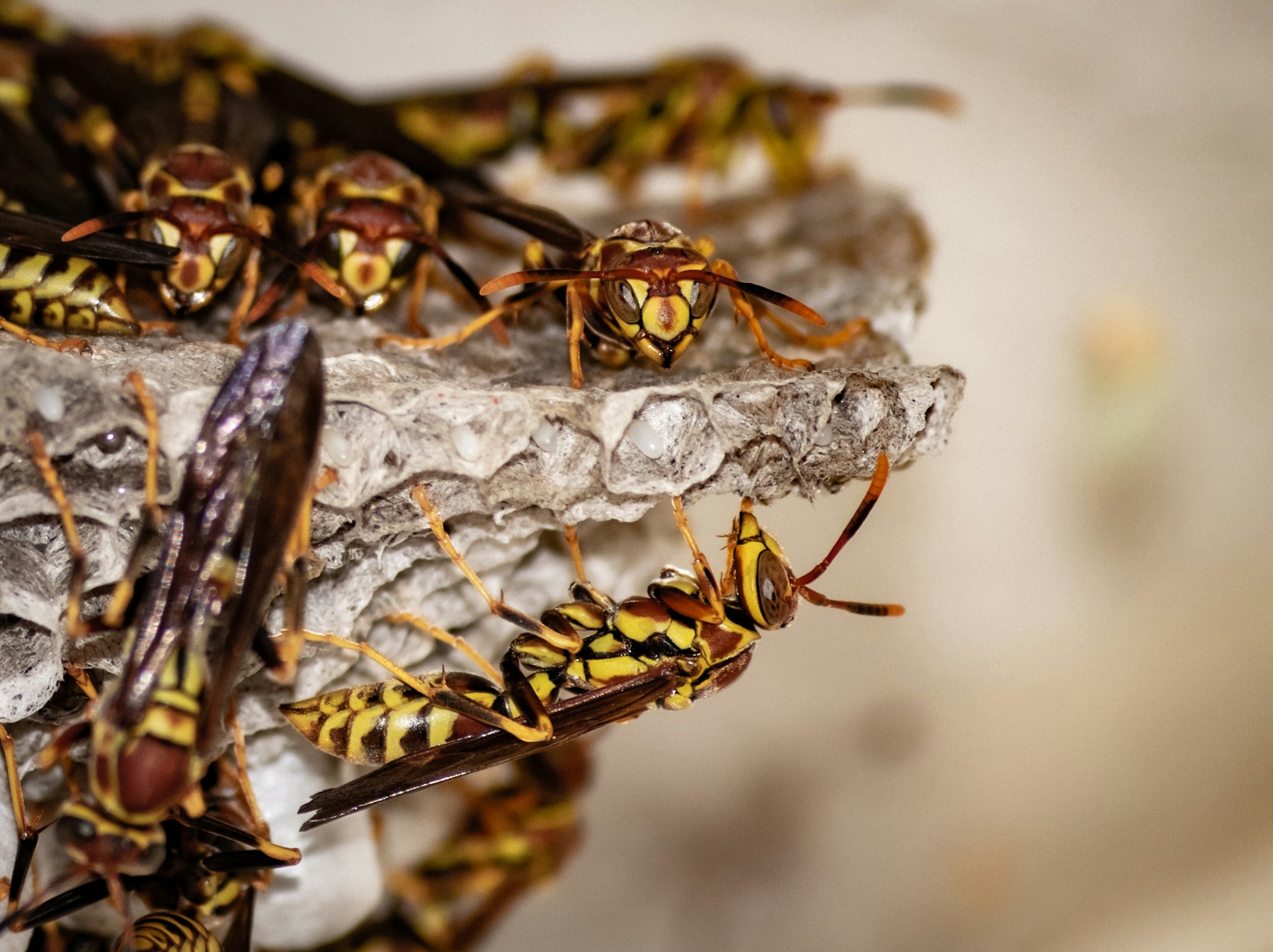
Wasp traps can kill wasps and help reduce their numbers. Wasp traps work by luring the insects with sweet scents and then trapping or drowning them.
For best results, place the trap early in the season before nests are fully developed. Set the traps at the edge of your yard or away from areas where people gather to keep wasps distracted.
2. Use a Solution with Vinegar to Repel Wasps
Mix apple cider vinegar, sugar, and water in a bottle to create a simple homemade trap. Cut the top off the bottle, invert it, and place it like a funnel. Set the trap in sunny locations for better effectiveness.
The scent will draw wasps in, but they will struggle to escape once inside. Replace the solution frequently.
3. Use Essential Oils
Peppermint oil, clove oil, and lemongrass oil are natural wasp repellents. Here's how you can use them:
- Mix 10–15 drops of essential oil with a few drops of dish soap and water in a spray bottle.
- Spray the solution on outdoor furniture, around eaves, window sills, and door frames.
- Reapply after rain or every few days for continued protection.
- You can also soak cotton balls in essential oil and place them in wasp-prone areas.
4. Don't Kill the Spiders in Your Garden
Let nature take its course. Wasps have many predators, including small birds, spiders, centipedes, dragonflies, salamanders, and frogs.
So, if you see any of these in your garden, let them be (as long as they don't become a problem as well!). They may help keep the wasp population in check. You can also install bird feeders to attract birds that prey on wasps. Additionally, if you notice any spiders around your house, leave their webs undisturbed, and they'll thank you by preying on these stinging insects!
As mentioned earlier, just make sure that these other animals don't become pests as well. For instance, if you see a few spiders in your garden, that's fine. If you start seeing more or if they get inside your house, it's time to remove them.
5. Mix Soap and Water
You can use a spray bottle filled with dish soap and water to spray nests and wasps. This solution clogs a wasp’s breathing pores, effectively killing them. Just mix about two tablespoons of dish soap with a quart of water and spray directly onto visible wasps or their nests.
This solution is especially effective when applied in the early morning or late evening when wasps are less active. Always wear protective clothing and approach cautiously to avoid getting stung.
6. Soak Their Nests with Citrus
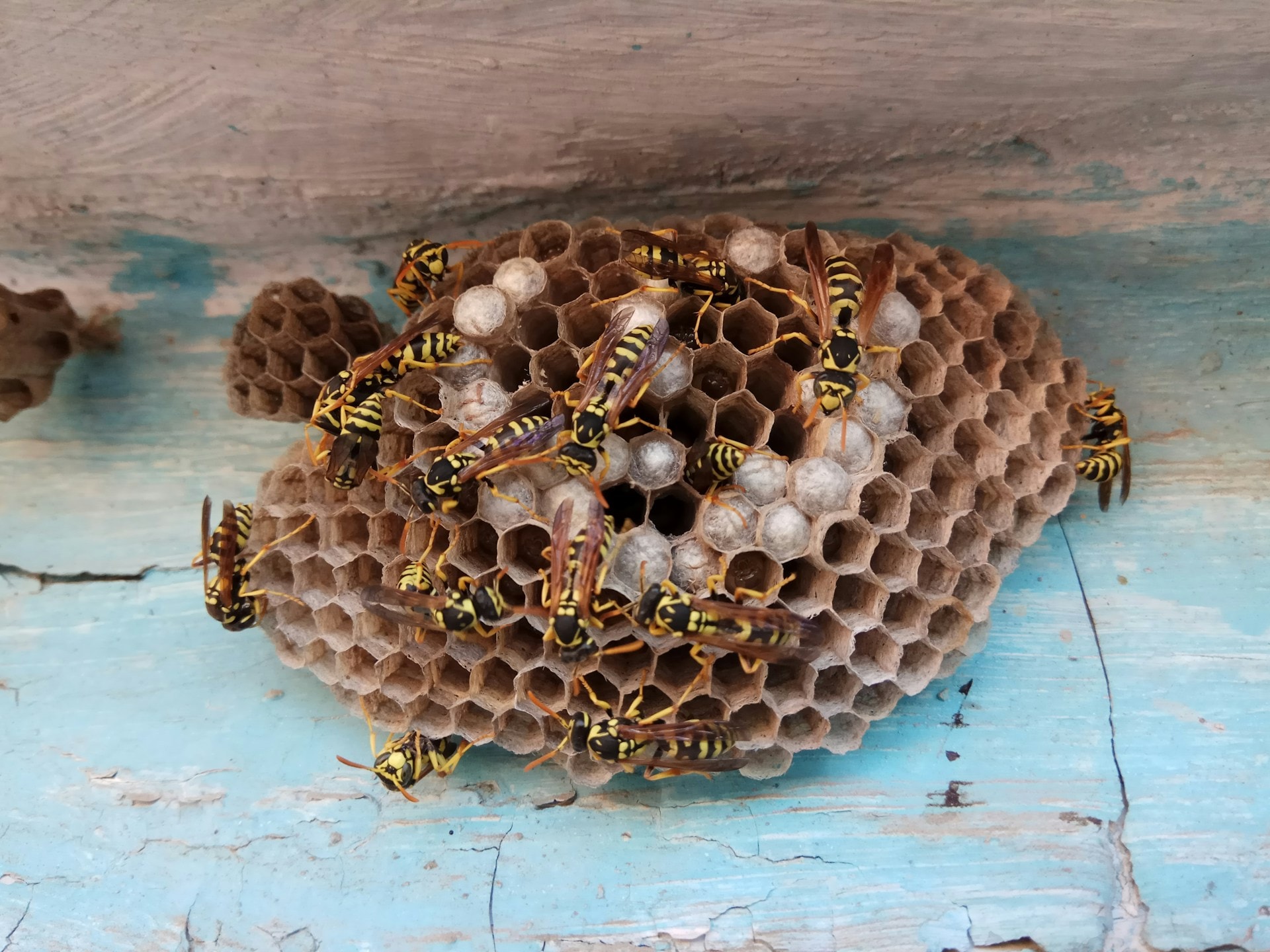
Boil citrus peels (lemon, orange, or lime) in water for at least 10–15 minutes to extract the oils, allow the solution to cool, and then pour it into a spray bottle. Spray directly on wasp nests or in areas where you’ve seen them building their nests.
The strong citrus scent acts as a natural wasp deterrent, so the wasps may not return to that spot. Reapply regularly, especially after rain, to keep the area unattractive to wasps.
7. Hang a Fake Wasp Nest
Wasps are highly territorial and tend to avoid nesting in areas where another colony already exists. Therefore, if you hang a fake wasp nest near patios, decks, and eaves, it can deter them from building nearby. Hang the wasp nest in visible, sheltered areas early in the season for the best preventative effect.
You can purchase reusable fabric versions or make your own from a paper bag stuffed with newspaper.
8. Grow Wasp-Repellent Plants
Certain plants like mint, eucalyptus, citronella, and wormwood can naturally repel wasps because of their strong scent. Lavender plants and marigolds also help deter wasps while adding beauty and fragrance to your landscape.
Consider planting them in pots or garden beds near doorways, patios, decks, and outdoor eating areas. Regularly prune and water these plants to ensure their scent stays strong enough to deter pests.
9. Keep Your Garden Clean
A clean, well-kept yard is crucial for deterring wasps. For example, fallen, rotting fruit is a major wasp attractant, especially in late summer and early fall when wasps become more aggressive.
As such, to make your garden unappealing to wasps:
- Regularly clear fallen fruit from the ground if you have fruit trees.
- Promptly pick up garden debris.
- Remove open garbage cans or seal them.
- Remove pet food dishes.
- Remove wood piles to limit nesting areas.
- Keep your lawn mowed and bushes trimmed.
- Keep outdoor food and drinks covered.
- Pour canned drinks into cups.
- Regularly clean grills.
- Maintain clean balconies and window sills, free of spills.
10. Cover Any Holes in the Ground
Some species, like yellow jackets, build underground nests that can be hard to detect until disturbed.
Therefore, in the early spring, inspect your yard thoroughly for small holes or burrows, particularly in shaded or grassy areas. Use soil, gravel, or mulch to fill the holes and discourage nesting.
If you’ve had wasp nests in the ground before, monitor the same area early in the season and treat any activity quickly.
11. Seal Cracks
Inspect your home thoroughly for cracks or gaps in siding, window frames, door jambs, soffits, vents, and roofing edges. Pay special attention to areas around attic vents, utility lines, and eaves—common spots where wasps enter and start building nests in walls or ceilings.
You can use exterior-grade caulk or expandable foam to seal these openings. For larger gaps or holes, consider using steel wool.
Re-inspect your home each spring to catch new damage early.
12. Install a High-quality Bug Screens
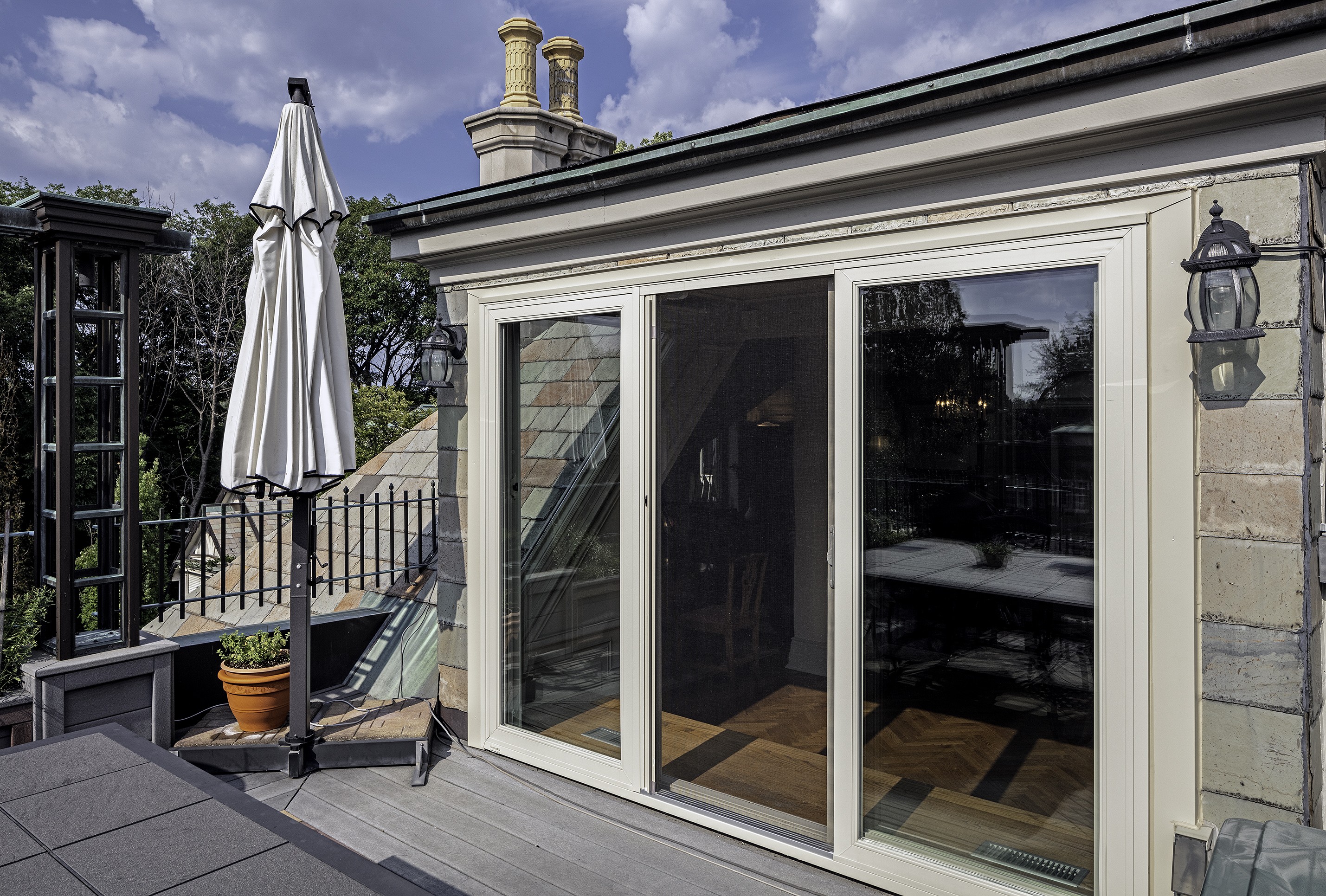
Ensure all windows, doors, and attic vents have intact bug screens to prevent wasps from gaining indoor access. Replace torn or worn-out screens and install fine mesh (20-mesh or smaller) for improved protection against small insects.
Retractable screens can be incredibly useful at keeping wasps away. For example, Magic's fully retractable screens come with a cartridge that is attached to the window frame. When you pull the bug screen out of the cartridge, it slides seamlessly along the frame and covers the entire window opening, leaving no gaps that wasps could exploit.
Since it's fully retractable, you don't have to keep the bug screen open at all times. When the window is closed, the screen can stay hidden within the cartridge, so you can bask in the sunlight and enjoy unobstructed views!
Safe Wasp Nest Removal
Wasps build a new nest every year. And since only the queen survives the winter (worker wasps and infertile females die in the autumn), wasp nests are empty in the winter, and you can safely remove them.
Removing a wasp nest in the spring is pretty straightforward, as they're still quite small. If it's late spring or autumn, there's likely no point in removing a wasp nest because the colony will die soon and the nest will be empty.
Removing a Wasp Nest In the Summer
If you need to remove a wasp nest in the summer, when wasps are most active, it's important to make sure that the insects are indeed wasps. Here's how you can identify a wasp nest:
- You may see a stream of insects flying in and out in a clearly defined flight path.
- You may hear the queen wasp working on her nest, especially if it's built somewhere inside the house.
- If you frequently see more than one or two wasps inside.
- Use species-specific features to identify wasps.
If you're sure there's a wasp nest inside your house or in your garden, it's time to locate the nesting site and identify the wasp species. If the nest is larger than a fist, it's better to seek professional help. If it's smaller and it absolutely needs to be removed, here are some safety precautions to consider:
- Wear appropriate clothing so that all exposed skin is covered. Wear enclosed goggles as well.
- Remove the wasp nest at night when the wasps return to the nest.
- If the nest is small and belongs to a less aggressive species, you may try removing it yourself using a broom or a long-handled scraper.
- You can also use a wasp-repellent spray, but make sure to follow all label instructions and safety precautions.
- You can also try to wet the nest, but only if it's small. It's not recommended to use this method for large nests.
Ultimately, it's best to call a pest control company that can safely remove the nest using special tools or wasp sprays, especially if it belongs to yellowjackets or if you're allergic to their stings.
Seal Your Home Against Bugs with Magic!
Wasp prevention starts with keeping your home sealed and protected, especially at entry points like windows and doors!
Magic’s fully retractable window screens offer an elegant and effective way to keep wasps and other insects outside where they belong - far from your sanctuary! With seamless integration, durable mesh, and a discreet design, our screens let in fresh air while keeping pests out.
Ready for a sting-free summer? Contact Magic to learn how our retractable screens can protect your home while letting fresh air in.
Frequently Asked Questions
What smell do wasps hate?
Wasps strongly dislike the scent of peppermint, citrus, and clove oils, as well as savory herbs like basil, eucalyptus, and thyme.
What keeps wasps away?
To keep wasps away, use peppermint or citrus essential oil sprays, plant wasp-repellent herbs like mint or lavender, set wasp traps, seal cracks, install bug screens, and maintain your house and patio clean and food-free.
What is a wasp's worst enemy?
Wasps are preyed upon by a variety of natural predators, including birds (like mockingbirds, tanagers, and honey buzzards), insects (such as dragonflies and robber flies), spiders, bats, and small mammals like skunks.
Why are wasps hovering around my house?
Wasps are hovering around your house if there are sweet or protein food sources (like ripe fruit, sugary drinks, or meat scraps). They are also attracted to unsealed trash, bright floral scents, open water, and sheltered nesting sites.
How can I prevent wasps from nesting in my yard?
To prevent wasps from nesting in your yard, focus on regular maintenance by removing fallen fruit and debris, sealing trash cans, and using natural repellents.
When should I call a professional pest control service?
You should call a professional pest control service when dealing with wasp nests in difficult or inaccessible areas or if they pose a significant safety risk.